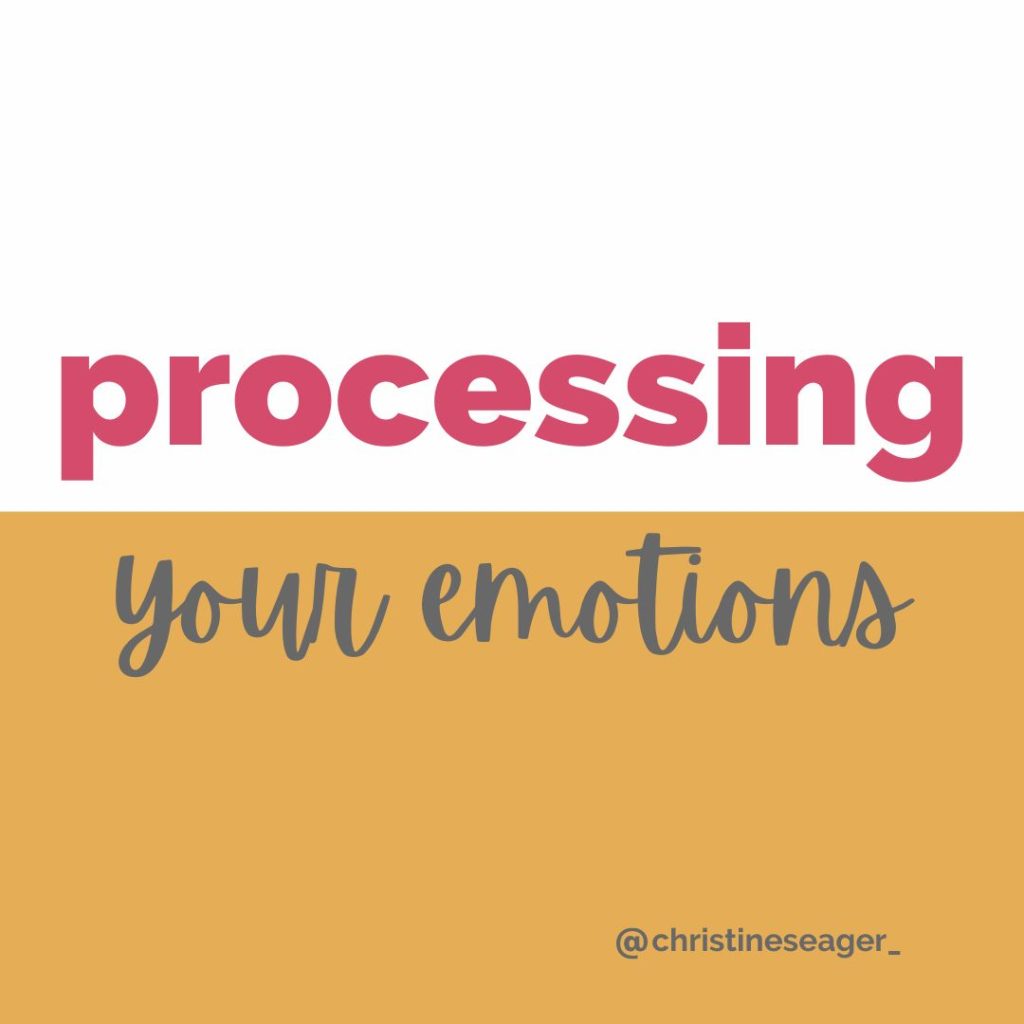In the last post, we discussed three things we can do with an emotion- resist, react to, or distract from them.
Today we’re going to talk about feeling & processing your emotions.
Sometimes it behooves us to feel a feeling. When we experience something fun, we want to feel joy. When we experience loss, we want to feel sad. It’s beneficial to experience grief for a while, but you might be ready and want to move on from it at some point.
To process our emotions, we first let them be without judgment, opinions, or “shoulding.” You can take a deep breath & just say to yourself, “I’m not resisting, reacting to, or distracting from this feeling. I’m just letting it be, and all feelings are welcome.”
Then describe what you’re feeling in your body. You are not repeating your thoughts; you’re not saying why you feel this way; you are simply describing what you are feeling.
Name it.
What color is it, and what shade?
What shape is it?
Where do you feel it in your body?
How does it move or vibrate?
What is its wavelength like (as if you can measure it with an EKG)?
What is its texture?
What is its temperature?
I recently experienced what I would call sadness with a side of anger. My community lost someone special. I was sad, & mad- questioning, why him? Why now? Why this way? And why did we have to lose one of the good ones? [Even in just reading this, how does that feel to you? Not good, right?] So, after feeling my sadness & anger for a while, I was ready to process it. This emotion was dark purple; to me, sadness is blue, & anger is red, making purple. It was dark because there was a lot of it. It was square-shaped & in my throat (I happen to carry a lot of emotion in my throat, often, my feelings get “caught up” in it.) It didn’t move or vibrate; it was heavy, like a brick. The wavelength was flat- no vibration or electricity. The texture was that of a brick, too, with uneven surfaces, scratchy and catching. The temperature is warm- hot.
Give it a try. Describing your emotions separates you from them. As the observer of your emotion, you are not your emotion. And as you describe your emotions, they dissipate, seemingly vanishing into thin air.

